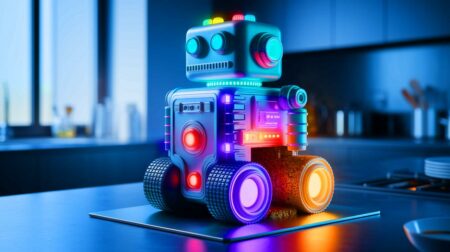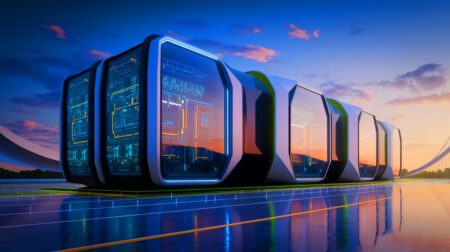In the ever-evolving landscape of industrial automation, Boston Dynamics’ Atlas 2.0 stands out as a beacon of innovation. This humanoid robot is not just another cog in the wheel; it represents a paradigm shift in how manufacturing tasks are executed, particularly in the automotive sector. With its deployment in Hyundai’s factories, Atlas is poised to transform the efficiency and safety of production lines. Through a combination of advanced artificial intelligence and robust mechanical design, Atlas is paving the way for a future where robots and humans work side by side harmoniously.
Atlas Automates the Sequencing Process
The sequencing of parts is a crucial logistical task in automotive manufacturing, ensuring that the correct components are arranged in order for vehicle assembly. Given that multiple models and trim levels are often produced on the same production line, installers rely on accurately sequenced parts to maintain efficiency. Engine hoods and other components are sorted from supplier containers into carts, which are then placed near the assembly line for easy access by workers.
The complexity of parts sequencing presents a challenge that traditional automation struggles to address, and Atlas 2.0 is designed to tackle this head-on. The humanoid robot must perform a variety of pick, transport, and placement tasks while autonomously handling thousands of parts of different weights, sizes, and shapes. Engineers have combined foundation models and reinforcement learning to enhance Atlas’s task execution and flexibility.
Reliability is paramount in sequencing, requiring Atlas to anticipate potential errors in selection, transport, or insertion of parts and react accordingly. Unlike robots that require extensive manual programming and human intervention, Atlas operates with greater autonomy, minimizing disruptions and reducing the risk of damage to parts.
Enhancing Automation
Boston Dynamics aims to develop an application that reflects real-world challenges: dynamic, complex, and designed for human-centered environments. The parts sequencing involves constantly changing conditions, with new input containers arriving and filled output carts being removed. Parts are not stored in easily accessible configurations, unlike structured robotic environments.
Atlas needs a full range of motion to reach objects at varying heights and retrieve them from dark, obstructed spaces. Mastering this complexity from the onset increases its adaptability for future applications. Additionally, parts sequencing offers a high return on investment. Frequent lifting, squatting, and twisting with heavy components make this activity repetitive and ergonomically demanding. By automating this process with Atlas, efficiency and throughput are increased, accident risks are reduced, employee retention is improved, and workers can transition to other tasks.
Integration into the Work Environment
With their ability to adapt to human-like situations in various ways, humanoid robots have the potential to integrate seamlessly into current workflows. Atlas is evolving to handle tasks for which it is most suited, even though no robot can accomplish every task. With its strength, agility, and developing intelligence, it is getting closer to real-world usage, as noted by Jackowski.
Testing will commence in Hyundai’s facilities, followed by additional pilot programs to refine and expand its capabilities. Boston Dynamics claims that with cutting-edge hardware, breakthroughs in artificial intelligence, and commercial robotics expertise, Atlas is well-positioned to drive the next phase of industrial automation.
Technological Advancements and Future Implications
The progress made by Boston Dynamics with Atlas 2.0 underscores the growing significance of AI and robotics in the industry. The combination of advanced hardware and sophisticated learning techniques enables Atlas to navigate complex environments and perform tasks that were previously beyond the reach of automation.
This technology has profound implications for the future of work and how tasks are performed. As robots like Atlas become increasingly capable, they could potentially replace certain human tasks, freeing workers to focus on duties that require more creativity and judgment. However, it is crucial to consider the social and economic impacts of this transition and reflect on how jobs evolve in a world that is becoming increasingly automated.
Boston Dynamics’ Atlas 2.0 represents a significant leap forward in the field of industrial robotics. By automating complex tasks such as parts sequencing, it paves the way for a new era of efficiency and safety in factories. How will companies and workers adapt to this new technological reality?
Did you like it? 4.5/5 (23)








Wow, this is amazing! Boston Dynamics never ceases to impress me. 🤖🚗
Is there any chance Atlas could take over my chores at home? 😂
How does Atlas handle quality control? Are there any metrics provided?
I’m skeptical about robots replacing human jobs. What happens to the workers? 🤔
Thank you for sharing this piece! It’s fascinating to see where technology is heading.
Impressive! But what if Atlas malfunctions during a critical task? 🤨
Can’t wait to see how Atlas performs in real-world conditions!
Looks like the future is here. What’s next, flying cars? 🚀
How environmentally friendly is the production of these humanoid robots?
Boston Dynamics did it again. Truly a game-changer!